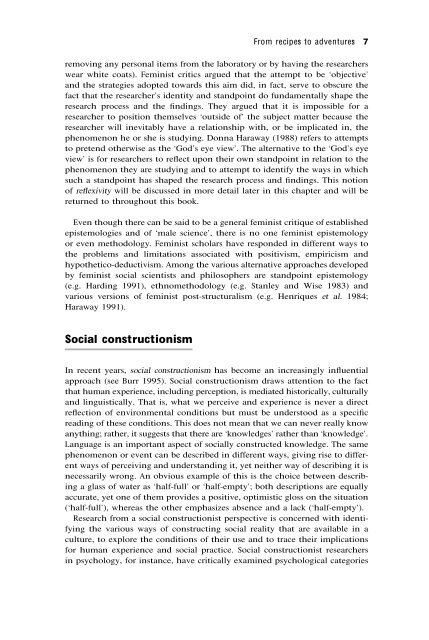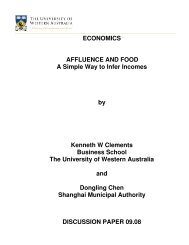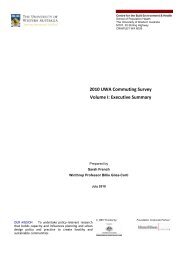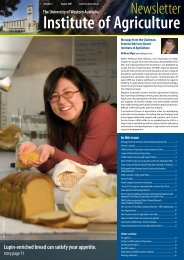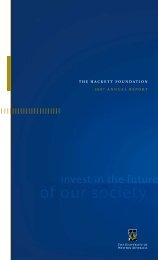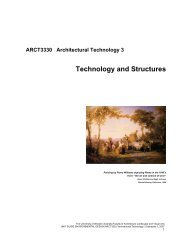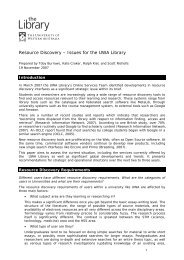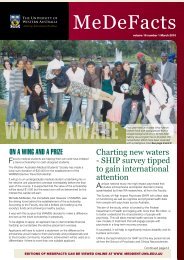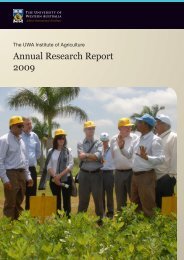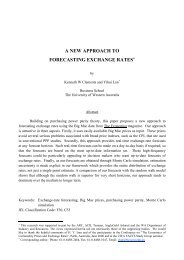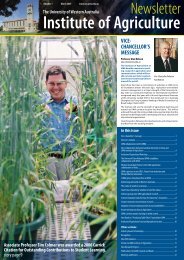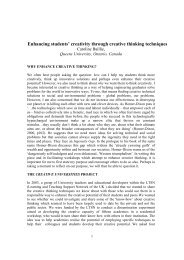Adventures in theory and method
Adventures in theory and method
Adventures in theory and method
Create successful ePaper yourself
Turn your PDF publications into a flip-book with our unique Google optimized e-Paper software.
From recipes to adventures 7remov<strong>in</strong>g any personal items from the laboratory or by hav<strong>in</strong>g the researcherswear white coats). Fem<strong>in</strong>ist critics argued that the attempt to be ‘objective’<strong>and</strong> the strategies adopted towards this aim did, <strong>in</strong> fact, serve to obscure thefact that the researcher’s identity <strong>and</strong> st<strong>and</strong>po<strong>in</strong>t do fundamentally shape theresearch process <strong>and</strong> the f<strong>in</strong>d<strong>in</strong>gs. They argued that it is impossible for aresearcher to position themselves ‘outside of’ the subject matter because theresearcher will <strong>in</strong>evitably have a relationship with, or be implicated <strong>in</strong>, thephenomenon he or she is study<strong>in</strong>g. Donna Haraway (1988) refers to attemptsto pretend otherwise as the ‘God’s eye view’. The alternative to the ‘God’s eyeview’ is for researchers to reflect upon their own st<strong>and</strong>po<strong>in</strong>t <strong>in</strong> relation to thephenomenon they are study<strong>in</strong>g <strong>and</strong> to attempt to identify the ways <strong>in</strong> whichsuch a st<strong>and</strong>po<strong>in</strong>t has shaped the research process <strong>and</strong> f<strong>in</strong>d<strong>in</strong>gs. This notionof reflexivity will be discussed <strong>in</strong> more detail later <strong>in</strong> this chapter <strong>and</strong> will bereturned to throughout this book.Even though there can be said to be a general fem<strong>in</strong>ist critique of establishedepistemologies <strong>and</strong> of ‘male science’, there is no one fem<strong>in</strong>ist epistemologyor even <strong>method</strong>ology. Fem<strong>in</strong>ist scholars have responded <strong>in</strong> different ways tothe problems <strong>and</strong> limitations associated with positivism, empiricism <strong>and</strong>hypothetico-deductivism. Among the various alternative approaches developedby fem<strong>in</strong>ist social scientists <strong>and</strong> philosophers are st<strong>and</strong>po<strong>in</strong>t epistemology(e.g. Hard<strong>in</strong>g 1991), ethno<strong>method</strong>ology (e.g. Stanley <strong>and</strong> Wise 1983) <strong>and</strong>various versions of fem<strong>in</strong>ist post-structuralism (e.g. Henriques et al. 1984;Haraway 1991).Social constructionismIn recent years, social constructionism has become an <strong>in</strong>creas<strong>in</strong>gly <strong>in</strong>fluentialapproach (see Burr 1995). Social constructionism draws attention to the factthat human experience, <strong>in</strong>clud<strong>in</strong>g perception, is mediated historically, culturally<strong>and</strong> l<strong>in</strong>guistically. That is, what we perceive <strong>and</strong> experience is never a directreflection of environmental conditions but must be understood as a specificread<strong>in</strong>g of these conditions. This does not mean that we can never really knowanyth<strong>in</strong>g; rather, it suggests that there are ‘knowledges’ rather than ‘knowledge’.Language is an important aspect of socially constructed knowledge. The samephenomenon or event can be described <strong>in</strong> different ways, giv<strong>in</strong>g rise to differentways of perceiv<strong>in</strong>g <strong>and</strong> underst<strong>and</strong><strong>in</strong>g it, yet neither way of describ<strong>in</strong>g it isnecessarily wrong. An obvious example of this is the choice between describ<strong>in</strong>ga glass of water as ‘half-full’ or ‘half-empty’; both descriptions are equallyaccurate, yet one of them provides a positive, optimistic gloss on the situation(‘half-full’), whereas the other emphasizes absence <strong>and</strong> a lack (‘half-empty’).Research from a social constructionist perspective is concerned with identify<strong>in</strong>gthe various ways of construct<strong>in</strong>g social reality that are available <strong>in</strong> aculture, to explore the conditions of their use <strong>and</strong> to trace their implicationsfor human experience <strong>and</strong> social practice. Social constructionist researchers<strong>in</strong> psychology, for <strong>in</strong>stance, have critically exam<strong>in</strong>ed psychological categories


